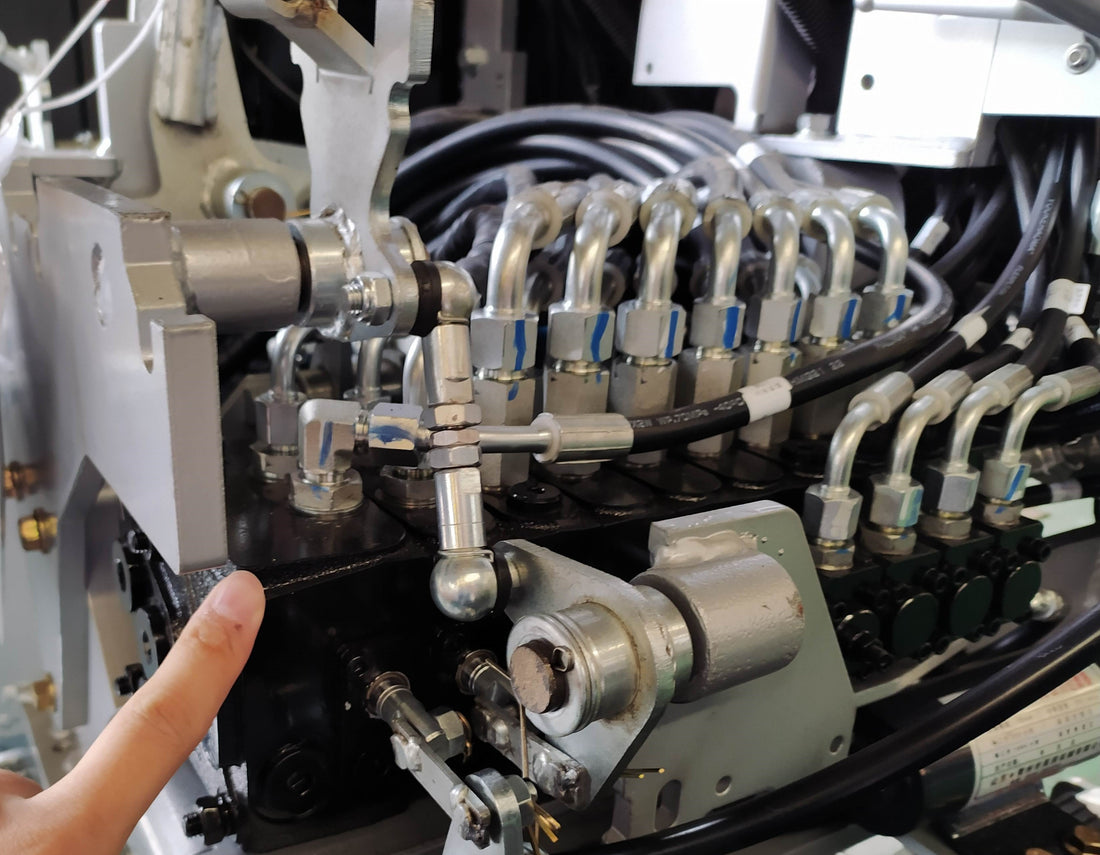Hydraulic circuits are an essential part of excavators and other heavy equipment. A hydraulic circuit provides a reliable and efficient means of controlling power and movement in an excavator. In this article, we will explore the basics of a hydraulic circuit in excavators, including the components and their role.
Components of an Excavator's Hydraulic Circuit
The hydraulic circuit of an excavator is composed of several components, all of which are necessary to ensure the excavator operates properly. The components of an excavator’s hydraulic circuit are the oil reservoir, the hydraulic pump, the excavator engine, the safety release valve, the main control valve, the filters, the hydraulic fluid, the hydraulic hoses, and the intercooler.
- The oil reservoir: is the part of the hydraulic circuit that stores the hydraulic fluid that is used to power the excavator. The hydraulic fluid is pumped from the reservoir to the other components of the hydraulic system, and is then returned back to the reservoir once it has been used. Secondary function of the oil reservoir includes cooling down of excavator hydraulic oil and reducing the amount of excavator hydraulic fluid heavy contaminants recirculation in the system a they get deposited at the bottom of the oil reservoir
- The hydraulic pump: is a device that pumps the hydraulic fluid from the oil reservoir to the rest of the hydraulic system. Two most common types of the hydraulic pumps which are used in the mini excavators are gear pump and piston pump. Piston pumps are generally the better option. They are more efficient than gear pumps and can handle higher pressures and speeds so they are able to move more liquid than gear pumps. Usually excavators with piston pumps will have smoother operating hydraulics. However, piston pumps tend to be more expensive than gear pumps, so if cost is a factor, gear pumps may be the better choice. Ultimately, the choice between piston and gear pumps depends on the specific application, as each type of pump has its own advantages and disadvantages. If you are in the market for a 1 ton mini excavator, usually gear pump will be sufficient, but if you are looking to buy a 2 ton mini excavator or larger, then a piston pump is recommended.
- The excavator engine: is responsible for powering the hydraulic pump, and alternator to power the electrical system of the mini excavator. Most of the mini excavators get equipped with either gasoline or diesel engine. When it comes to mini excavators, diesel engines are generally the better option due to their improved fuel economy and reliability. However, the more powerful and efficient off-highway diesels have become more complex and require more stringent emissions controls. Since diesel engines are more expensive than gasoline it is important to weigh the cost of the components against the benefits of the diesel engine before making a purchase decision. Read about pros and cons of Kubota D902 Diesel engine with which JoyT5s JT5200 series mini excavators get equipped
- The safety release valve: is a device that is used to release any excess pressure that is built up in the hydraulic system. This pressure can be caused by a variety of factors, such as a faulty component or a buildup of debris in the system. The safety release valve helps to ensure that the pressure in the system is kept at a safe level and that any excess pressure is released before it can cause any damage. Since safety release valves have springs inside, eventually the spring will fail and the valve will need to be replaced. It is important that the replacement pressure valves is rated for the appropriate pressure that your mini excavator requires. Tripping of the safety pressure valve below required threshold with decrease the power of your hydraulic system. Tripping of the safety pressure valve above the threshold will increase the risk of damaging or even having a catastrophic failure of other components in your mini excavator's hydraulic circuit
- The main control valve: is the part of the hydraulic circuit that allows the operator to control the flow of the hydraulic fluid, and distribute it between different parts of the mini excavator hydraulic circuit like linear (pistons) and rotary (motors) actuators. With the help of the main control valve, the mini excavator operator controls excavator's movement
- The filters: are used to ensure that the hydraulic fluid is clean and free of any debris or contaminants. Without the filters, the hydraulic system could become clogged with debris or contaminated with contaminants, which could lead to the system malfunctioning or even breaking down. Contaminated hydraulic fluid is the number one cause of failure of hydraulic system components. That is why hydraulic fluid filters are placed in multiple locations throughout mini excavator's hydraulic system. Generally, mini excavator hydraulic system will have filters placed in the hydraulic fluid reservoir, a breather filter on top of the hydraulic fluid reservoir, before and after the hydraulic pump as well as in the return lines and off-lines.
- The hydraulic fluid: is a type of non-compressible liquid that is used to transmit power within the hydraulic system. Also hydraulic fluid also helps to keep the excavator’s components and hoses lubricated, preventing corrosion and wear. Without the hydraulic fluid, the excavator would not be able to move
- The hydraulic hoses: Mini excavators often require hydraulic hoses that are durable and able to withstand high-pressure environments. The pressure rating for a hose should be above the system's normal operating pressure and account for temporary pressure surges. Rubber hydraulic hoses are usually made of nitrile rubber since it's compatible with most hydraulic fluids. Rubber hoses can either have textile reinforcement or a wire braid for reinforcement. Dedicated hydraulic lines for the pistons moving the arm and bucket sometimes are protectively channeled through the framework of the boom; this helps keep the hoses from being pinched, crushed, or otherwise damaged.
- The oil cooler: It can be argued that the second most common source of the hydraulic system failure in the is the excess heat. During the operation of the mini excavator, hydraulic fluid heats up due to energy being released in the form of heat. Excessive heat significantly reduces the life of mini excavator hoses and seals due to increased speed of chemical reaction of these components with the hydraulic fluid. Also excess heat impacts hydraulic fluid viscosity that leads to poor lubrication of the moving parts within mini excavator's hydraulic system. Last but not least, higher temperatures speed up hydraulic fluid aging by faster rate of oil oxidization and production of carbonaceous nitro-nitrates in the oil. Oil coolers help to keep oil temperatures under control and minimize the negative effect of the excess heat on the excavator's hydraulic system. Please note that oil cooler is not a "must have" for the hydraulic system to operate, that it why some of the entry level mini excavators might not be equipped with the oil cooler, but if the mini excavator is required to be operated continuously, oil cooler is highly recommended.
- The linier actuators: are the devices that enable linear motion in the hydraulic system. In the mini excavator's case linear actuators are hydraulic cylinders. Read more about hydraulic cylinders in Mini Excavator Terms article for more details
- The rotary actuators: are the devices that enable rotary motion in the hydraulic system. Mini excavator's rotary actuators are the hydraulic motors used to rotate excavator's house and enable track movements
Mini Excavator Hydraulic System Conclusion
By reading this article you now have a general understanding about the mini excavator's hydraulic system components and what to look for when choosing a mini excavator. See JoyT5's Mini Excavators for sale in Canada.
Click here to visit Home Page

